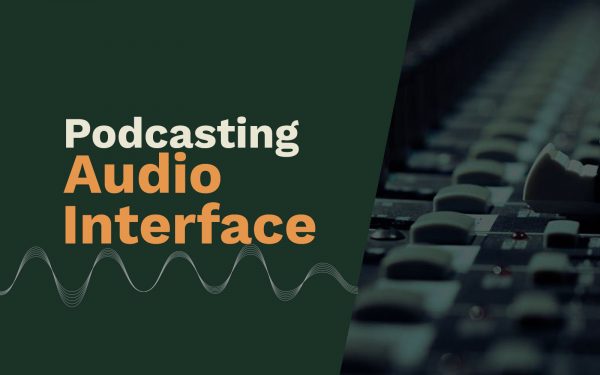What Is an Audio Interface?
In simple terms it’s the converter of your microphone’s analogue signal into a digital signal that your computer can understand and record (often called an analog-to-digital converter). When using a microphone that has an XLR plug (the only alternative is USB – which we don’t recommend for a pro setup). You need an audio interface because it means you can plug pro XLR mics right into your computer.
Why is XLR Microphone Considered Better?
XLR microphones create an analogue signal which is converted to a digital with the help of an audio interface whereas USB microphones need to deal with both these tasks inside the microphone itself. Many high end microphones are XLR only – which enables them to focus the resources and components inside the microphone on one job only – getting you a GREAT sound. Whilst USB microphones are constantly improving they have to perform two actions and not just one. Professionals believe that’s not the best use of resources. In addition to this you can have more control over volume and processing (e.g. dbx in chain before audio interface) and plug two or more microphones at the same time. Recording two USB microphones at the same time is a challenge and often requires third party software to work properly.
Best Budget Audio Interface
The most popular device amongst the beginners is Focusrite Scarlett 2i2. It plugs to your computer via USB, you can plug your microphones into the front of it, select the interface and record. We have created a comprehensive review of it below:
We like it because it is simple to use and comes with a friendly price tag of just over $120/£100. You can use it for two microphones and it will serve you well for years. In addition it’s a very well sized device that can be easily used as a part of a mobile setup and on the move recording.
forBest Professional Audio Interface
We couldn’t decide here on one as we love three!
- Rodecaster Pro Roadcaster Pro was built with podcasters in mind and deserves our love for that fact amongst it’s great features. It’s the first podcast dedicated audio interface. It’s easy to use and operate by somebody who is new to the audio world. It comes with an insane amount of podcast features too along with constant useful firmware updates that unlock new features and recording possibilities. With a price tag of just over £550/$720 it certainly is not cheap. We wouldn’t call it portable either. It’s a large piece of equipment. We have done a whole series of videos for Roadcaster Pro users covering the features in detail here. One important consideration to have is that all of the effects inside Roadcaster Pro are digital and you may experience some latency when monitoring inside your headphones.
- Soundcraft Signature 12 MTK Soundcraft Signature 12 MTK (note the MTK is important as 12 alone is a different model) is Mike’s favorite for many years now as you can record many channels as separate tracks in Adobe Audition (you can also do this with Rodecaster and both are around the same price point). It’s more of a beast but gives you far more hands on control over your audio. (Roadcaster offers digital dials and effects where as Soundcraft is a traditional analogue controller). It’s a traditional mixer from the radio world and certainly requires a little bit of knowledge to set up and use, once up and running however – you have a truly pro setup in place. It gives you more flexibility and more options for devices to connect (compared with Rodecaster). It comes at approx. £350/$450 price point.
- TASCAM Model 12 Tascam Model 12 is a newly designed interface that comes with many mod cons missing from Soundcraft. USB-C connection as well as Bluetooth connectivity and a swanky digital display. It has a very visually pleasing design with all of the plugs coming out on the back of the desk (vs top of it on the Soundcraft). It is Izabela’s audio interface of choice. Price point of approx. £550/$750 is certainly the high shelf of our recommendations but worth to pay for in our opinion.
Note that all of above recommendations are based on our own use of the devices. We own every piece of the equipment mentioned and have used it excessively. We have not been paid to feature them in this article. The links provided are affiliate links and we will receive a commission if you decide to use them to make a purchase – which we are very grateful for!
Important Considerations
We thought it’s worth to put together a short list of considerations you should take before making the final decision.
- If you want to record phone calls, online calls or any kind of guest and have them hear everything you’re doing (e.g. your mic, guests, music and jingles) a mix minus is a must. Many audio interfaces make this easy (e.g. Soundcraft and Rodecaster). Others you’ll need an audio interface/mixer with AUX out that you can feed to your online guest caller.
- How many inputs does it have? Enough for one mic, two or three? Ensure to future proof your purchase.
- Does it have another input you could use for playing music and jingles (for instance from a tablet or phone?)
- Do you want simple inputs or would you prefer a mixer (with faders) that can give you more control on volume, EQ and live mixing?
We hope you found this post helpful. Please post your comments, questions and comments below. If you would like to receive advice from other audio experts make sure to visit our community forum.
